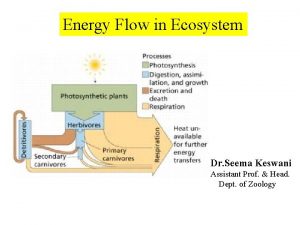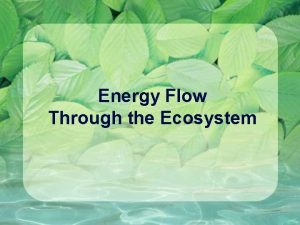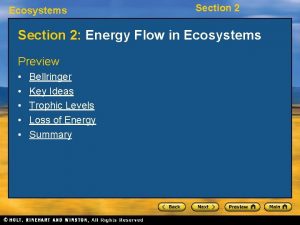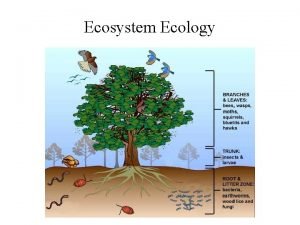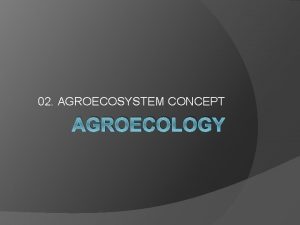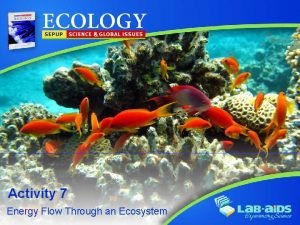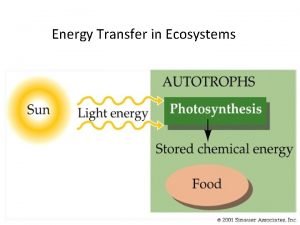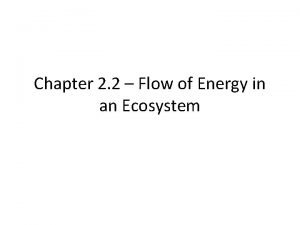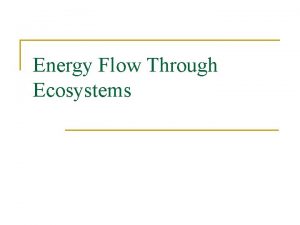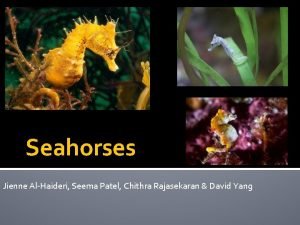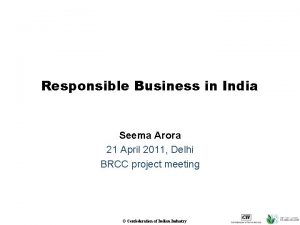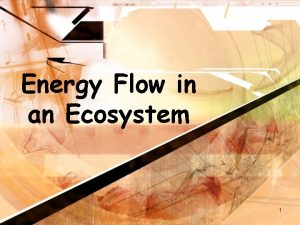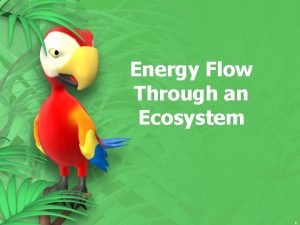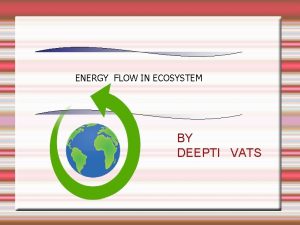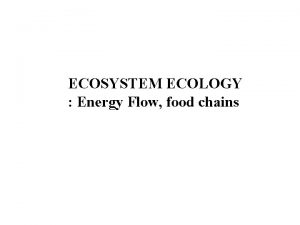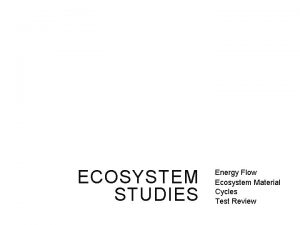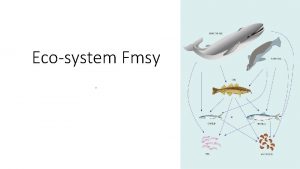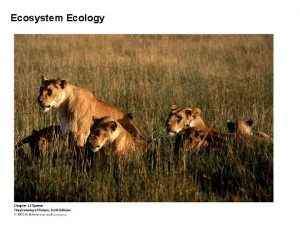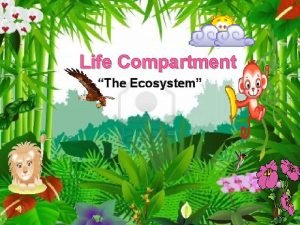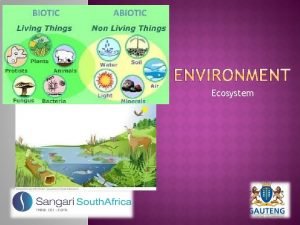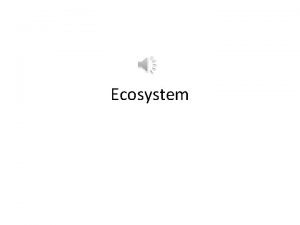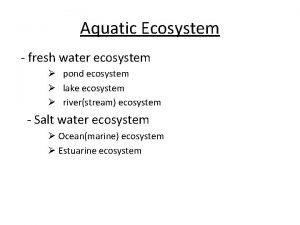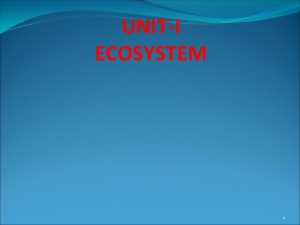Energy Flow in Ecosystem Dr Seema Keswani Assistant
















- Slides: 16

Energy Flow in Ecosystem Dr. Seema Keswani Assistant Prof. & Head. Dept. of Zoology


Trophic Levels • The primary source of energy for an ecosystem is the sun. • Photosynthetic organisms, such as plants and algae, change light energy from the sun into energy that they can use to grow. • These photosynthetic organisms are producers, the basic food source for an ecosystem. • Consumers are organisms that eat other organisms instead of producing their own food.

• Decomposers, such as bacteria and fungi, are organisms that break down the remains of animals. • In an ecosystem, energy flows from the sun to producers to consumers to decomposers. • Each step in the transfer of energy through an ecosystem is called a trophic level.

Trophic Levels

Food Chains • In ecosystems, energy flows from one trophic level to the next, forming a food chain. • The first trophic level of ecosystems is made up of producers. Plants, algae, and some bacteria use the energy in sunlight to build energy-rich carbohydrates. • The second trophic level of a food chain is made up of herbivores, which eat producers. Cows are an example of an herbivore.

• The third trophic level includes animals that eat herbivores. Any animal that eats another animal is a carnivore. Some carnivores are on the third trophic level because they eat herbivores. • Other carnivores are on the fourth trophic level or an even higher trophic level because they eat other carnivores. • Omnivores, such as bears, are animals that are both herbivores and carnivores.

Food Webs • In most ecosystems, energy does not follow a simple food chain. Energy flow is much more complicated. • Ecosystems almost always have many more species than a single food chain has. In addition, most organisms eat more than one kind of food. • This complicated, interconnected group of food chains is called a food web.


Loss of Energy Pyramid • Energy is stored at each link in a food web. But some energy that is used dissipates as heat into the environment and is not recycled. • When an animal eats food, it gets energy from the food. • When the energy is used, about 90% of it is converted into heat energy and is dispersed into the environment

Energy Transfer Through Trophic Levels

• Only about 10% is stored in the animal’s body as fat or as tissue. This amount of stored energy is all that is available to organisms at the next trophic level that consume the animal. • An energy pyramid is a triangular diagram that shows an ecosystem’s loss of energy, which results as energy passes through the ecosystem’s food chain. • Each layer in the energy pyramid represents one trophic level.

• Producers form the pyramid’s base, which is the lowest trophic level. The lowest level has the most energy in the pyramid. • Herbivores have less energy and make up the second level. • Carnivores that feed on herbivores make up the higher level.

• The energy stored by the organisms at each trophic level is about one tenth the energy stored by the organisms in the level below. So, the diagram takes the shape of a pyramid. • Big predators, such as lions, are rare compared to herbivores. • Big predators are rare because a lot more energy is required to support a single predator than a single herbivore. Many ecosystems do not have enough energy to support a large population of predators.

The energy stored by the organisms at each trophic level is about one tenth the energy stored by the organisms in the level below. So, diagram takes the shape of a pyramid. Amount ofthe. Energy at Four Trophic Levels

Summary • In an ecosystem, energy flows from the sun to producers to consumers to decomposers. • Energy is stored at each link in a food web, but some energy that is used dissipates as heat into the environment and is not recycled.
 Seema keswani
Seema keswani How does energy flow in a food web
How does energy flow in a food web Chapter 2 section 2 flow of energy in an ecosystem
Chapter 2 section 2 flow of energy in an ecosystem Energy flow and material cycling in ecosystem
Energy flow and material cycling in ecosystem Energy flow and material cycling in ecosystem
Energy flow and material cycling in ecosystem Energy flow in ecosystem
Energy flow in ecosystem Describe the flow of energy in the kelp forest ecosystem.
Describe the flow of energy in the kelp forest ecosystem. Ecosystem energy transfer
Ecosystem energy transfer Principles of ecology 2 flow of energy in an ecosystem
Principles of ecology 2 flow of energy in an ecosystem How does energy flow in an ecosystem
How does energy flow in an ecosystem Energy flow through an ecosystem
Energy flow through an ecosystem How does energy flow through an ecosystem
How does energy flow through an ecosystem How did the young lady befool horace danby
How did the young lady befool horace danby East of england deanery
East of england deanery Seema munaf
Seema munaf Seema patel md
Seema patel md Seema arora cii
Seema arora cii
